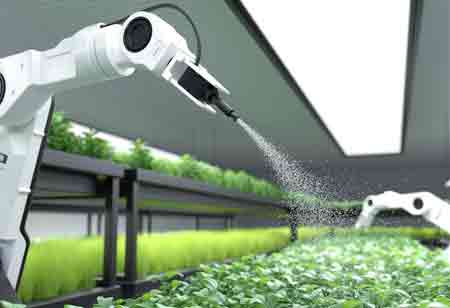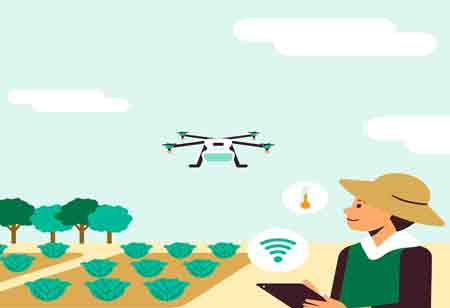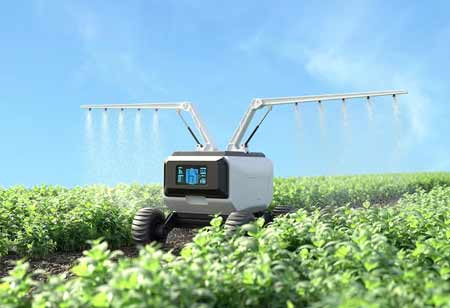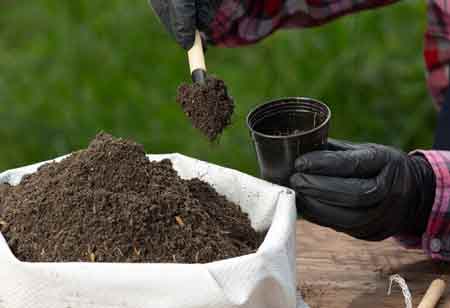Thank you for Subscribing to Agri Business Review Weekly Brief
Trends Redefining Horticultural Innovation
The landscape of horticultural innovation is undergoing a transformative shift, propelled by a confluence of dynamic trends.

By
Agri Business Review | Thursday, January 18, 2024
Stay ahead of the industry with exclusive feature stories on the top companies, expert insights and the latest news delivered straight to your inbox. Subscribe today.
Tech integration, climate resilience, and supply chain efficiency redefine horticultural innovation, fostering sustainable practices amid evolving landscapes.
FREMONT, CA: The landscape of horticultural innovation is undergoing a transformative shift, propelled by a confluence of dynamic trends. This paradigmatic evolution reflects a collective drive towards sustainable methodologies amidst the challenges posed by environmental changes.
Integration of Technology and Automation
The horticultural sector is changing quickly as growers adopt new technologies, particularly for planting, managing crops, and harvesting. Companies use automation, data analytics, sensor technologies, and digital monitoring in smart greenhouses to improve growth control procedures. Automation is aided by robotics, which includes plant handling and transplanters. Meanwhile, generative artificial intelligence is influencing jobs ranging from crop management to plant breeding.
Barcode/RFID-enabled inventory management solutions streamline supply chains and offer real-time tracking from seed to shelf. By optimizing routing, fuel consumption, and maintenance, telematics and smart solutions for fleets and delivery trucks help to increase delivery efficiencies. Businesses must consult insurance providers when contemplating investments in these technologies to safeguard their valuable capital.
Influence of Plants on Mental Well-being
The growing popularity of plants and their significant effects on mental health and general well-being offer enterprises a great chance to demonstrate their knowledge and pursue new markets. It is essential to speak with the insurer about safety precautions when one contemplates venturing into the domain of horticultural mental wellness to manage any potential hazards.
Adding plants with mood-boosting qualities to the inventory, holding educational workshops on plant wellness, and increasing store ambiance with nature-inspired designs are some ways to include mental wellness into the products. The larger community can gain by working together with healthcare practitioners or retirement homes to create gardens and floral displays that incorporate horticulture therapy. These programs draw attention to and also address the growing demand for plant-based remedies for health problems.
Climate-Resilient Horticulture
Only $100 billion of the $280 billion in global economic losses resulting from natural and man-made disasters—the sixth highest amount on record—were covered by insurance, underscoring the pressing need for businesses, especially those operating greenhouses, to address the risks associated with climate change.
According to scientists, natural disasters are expected to occur more frequently and with greater intensity; thus, greenhouse operators should evaluate their insurance policies. Cultivating resilient plant varieties, using cutting-edge weather monitoring technology for early intervention, and implementing controlled environment horticulture for climate stability are some strategies to improve climate readiness. These steps are intended to protect greenhouse businesses from monetary losses, and guarantee continued productivity in the face of environmental uncertainty.
Supply chain optimization
A strong supply chain is essential to the continued success of any horticulture firm, and modern trends like improved storage and logistics are critical to fortifying this base. Examining insurance plans designed to improve supply chain resilience can provide an extra layer of protection for the business.
The pursuit of efficiency becomes of significant importance as the new year approaches. A robust and effective supply chain can be achieved by utilizing regionalized networks for sourcing and distribution, cutting-edge packaging techniques for longer shelf lives, digitalized logistics for improved visibility, investments in cold chain infrastructure, and just-in-time precision practices. Furthermore, implementing omnichannel flexibility via online purchasing, in-person pickup, and partnerships with distributors or grocers can improve accessibility and accommodate a range of consumer preferences, strengthening the company against possible risks.
These trends redefine horticultural practices, steering the industry toward a future where innovation and adaptability remain pivotal, ensuring not just growth but also the long-term viability of horticultural endeavors in an increasingly dynamic global landscape.





